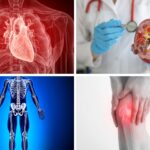Understanding Energy

Understanding Energy
One of the most common health complaints is “I just don’t have the energy.” It’s also one of the most misunderstood. Part of the confusion stems from how the word “energy” is invoked these days. In a strict sense, energy is a term of physics and thermodynamics. When people say they’re “low on energy” they don’t mean this literally, of course. To have “no energy” would be death (beyond starvation). Rather, this is what we say when we’re feeling tired or lethargic. Unfortunately, too many people feel this way too often and, interestingly, it’s likely a result of what they’re eating.
If we view energy in a more accurate sense within the body, we need to consider the main fuels—glucose and body fat [1]. Of course, there are other fuels, such as ketones and even lactate (both historically very misunderstood), but these provide relatively little in comparison to the two big ones. Of the two, glucose is much smaller. The average, relatively lean person will have roughly 1,500 calories stored in the body as glycogen (a storage form of glucose), mostly housed within the muscles and liver. This same lean person will likely have over 100 times that amount of energy stored as fat! That’s right—even a lean person has about 150,000 calories stored as fat on their body. Of course, people that have more body fat (i.e., overweight or obese) can easily have 5-10 times this.
To put this in perspective, a typical person could only live about one day on the energy from stored glucose alone. In contrast, a lean person could live on fat storage for roughly 80 days! In fact, in cases of higher body fat levels, and under supervision, there’s evidence of people living off their own fat for fuel for over a year [2]. Clearly, we have energy to spare.
But why then do we sometimes feel like we’re running on empty? Understanding these two fuels and their roles as energy sources for the body is kind of like a fuel truck. On a fuel truck there are two sources of fuel—a large, obvious tank and a much smaller, less obvious tank. The fuel truck is working hard to haul around the large tank, but, unfortunately, can never actually tap into it. The engine is forced to rely on the small fuel tank tucked beneath the cab of the truck, which means it needs to stop and fill up every few hours. But imagine how far it could go if it were able to just tap into the big tank!

These tanks are very analogous to our fat and glucose storage. If a person is only relying on glucose for energy, they’ll need to regularly “stop and fill up” in order to feel like they have energy. However, if a person is relying predominantly on fat for fuel, then they enjoy that steady source of energy for much, much longer.
But how can we shift those fuel lines to allow our metabolic engine to tap into our fat reserves and rely less on glucose? It’s all about the hormone insulin—insulin determines which fuel our body is primarily using [3]. If insulin is high, the body will rely on glucose as its main fuel; if insulin is low, then fat becomes the predominant energy source.
Insulin also determines how much fuel we have available to burn at any given moment. Remember, insulin wants the body to store energy, not use it. When we eat refined starches and sugars (e.g., bread, pasta, sweets, etc.), the rapid rise in blood glucose is matched by a rapid rise in insulin—insulin wants to keep blood glucose from going and staying too high. Sometimes, insulin goes too far, leading to a state called “reactive hypoglycemia” [4]. If a person is poorly adapted to burning fat (i.e., chronically elevated insulin), then this drop in glucose can be a problem, leading to hunger and fatigue.
Beyond metabolic energy, but still relevant to dietary habits, there are a few other culprits worth mentioning that often impact our sense of energy.
Overeating
Overeating can make you feel tired. Overeating is a real problem; some people are less addicted to specific foods, and more addicted to feeling full [5]. Unfortunately, when we eat to this point, we may get what some call “a food coma”. As it is with fuel use, this is heavily influenced by changes in insulin. If we overindulge in an insulin-spiking meal, we may get an overload of tryptophan to the brain. Insulin directly increases the uptake of tryptophan into the brain [6], and tryptophan can contribute to the famous “sleepy” signal people feel after overeating [7].
Sleep deprivation
Of course, leaving the most obvious for last, not getting enough sleep will leave you feeling deprived of energy. As we all know, there are countless small and large habits that we can address to improve the quality of our sleep, which we clearly need—almost 70% of American adults report having trouble sleeping. One notable aspect of good sleep is body temperature—if we’re too warm, we won’t sleep well. In fact, increased body temperature is one of the most common causes of insomnia [8]. One way to keep our body temperature at a comfortably low level is to keep our glucose at a comfortable level. Spiking glucose, either by glucose infusion or excessive carbohydrate consumption, spikes body temperature [9, 10], and consuming a high-carbohydrate load before bed, and the commensurate blood glucose and body temperature spike, results in more frequent waking and worse sleep [11].
Take-away thoughts
Whether it’s improved sleep, avoiding the “food coma”, or adjusting our fuel use, the food we eat, and the literal caloric energy that comes with it, can paradoxically leave us feeling deprived of energy. Controlling carbohydrates and insulin is one powerful, simple way to help our bodies use energy better and have more energy to enjoy life.
References
1 Cahill, G. F., Jr. (1976) Starvation in man. Clin Endocrinol Metab. 5, 397-415
2 Stewart, W. K. and Fleming, L. W. (1973) Features of a successful therapeutic fast of 382 days’ duration. Postgrad Med J. 49, 203-209
3 Cahill, G. F., Jr. (1971) The Banting Memorial Lecture 1971. Physiology of insulin in man. Diabetes. 20, 785-799
4 Brun, J. F., Fedou, C. and Mercier, J. (2000) Postprandial reactive hypoglycemia. Diabetes & metabolism. 26, 337-351
5 Silva, A. S., Cardoso, H., Nogueira, C., Santos, J. and Vilaca, H. (1999) Treatment of morbid obesity with adjustable gastric band: preliminary report. Obesity surgery. 9, 194-197
6 Cangiano, C., Cardelli-Cangiano, P., Cascino, A., Patrizi, M. A., Barberini, F., Rossi Fanelli, F., Capocaccia, L. and Strom, R. (1983) On the stimulation by insulin of tryptophan transport across the blood-brain barrier. Biochem Int. 7, 617-627
7 George, C. F., Millar, T. W., Hanly, P. J. and Kryger, M. H. (1989) The effect of L-tryptophan on daytime sleep latency in normals: correlation with blood levels. Sleep. 12, 345-353
8 Lack, L. C., Gradisar, M., Van Someren, E. J., Wright, H. R. and Lushington, K. (2008) The relationship between insomnia and body temperatures. Sleep Med Rev. 12, 307-317
9 Green, J. H. and Macdonald, I. A. (1981) The influence of intravenous glucose on body temperature. Q J Exp Physiol. 66, 465-473
10 Welle, S. and Campbell, R. G. (1983) Stimulation of thermogenesis by carbohydrate overfeeding. Evidence against sympathetic nervous system mediation. The Journal of clinical investigation. 71, 916-925
11 Jalilolghadr, S., Afaghi, A., O’Connor, H. and Chow, C. M. (2011) Effect of low and high glycaemic index drink on sleep pattern in children. J Pak Med Assoc. 61, 533-536
This article is for informational and educational purposes only. It is not, nor is it intended to be substitute for professional medical advice, diagnosis, or treatment and should never be relied upon for specific medical advice.

















